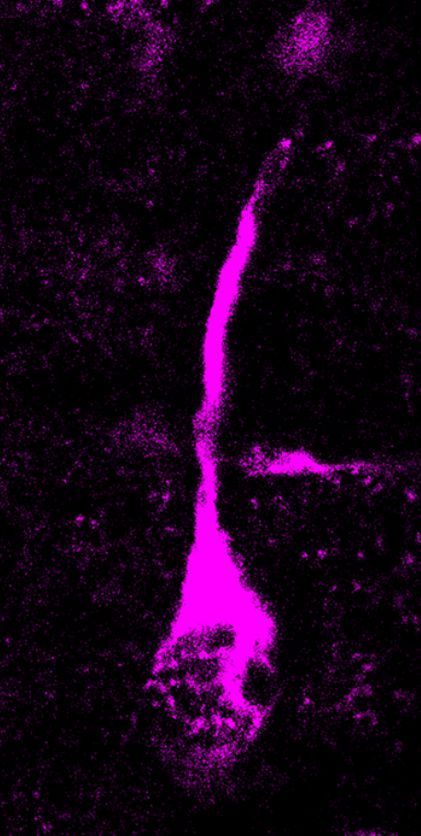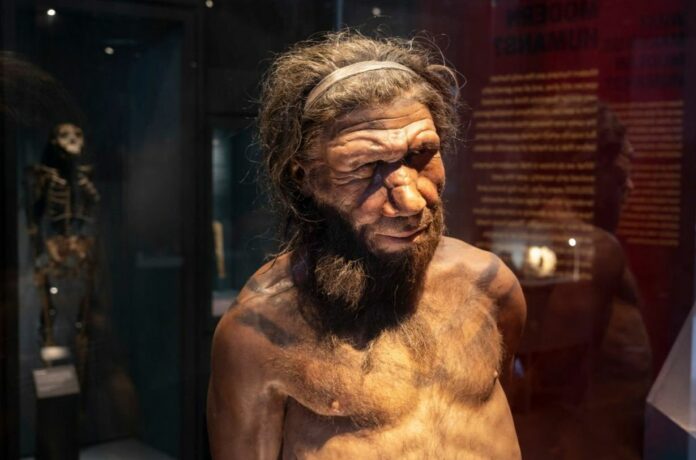Researchers have long been intrigued by the topic of what distinguishes modern humans. Comparing ourselves to our nearest ancestors, the Neandertals, provides fascinating insights.
Some researchers believe that the expansion of the human brain and the generation of more neurons during brain growth played a significant role in the formation of our advanced cognitive abilities.
But while Neandertals and modern humans both have brains about the same size, not much is known about whether or not the production of neurons in their brains during development was different.
According to new research (10.1126/science.abl6422) from the Max Planck Institute of Molecular Cell Biology and Genetics (MPI-CBG) in Dresden, the protein TKTL1’s modern human variant, which differs from the Neandertal variant by only one amino acid, increases basal radial glia, a specific type of brain progenitor cell, in the modern human brain.
The majority of neurons in the growing neocortex, an area of the brain important for a variety of cognitive functions, are produced by basal radial glial cells.

As TKTL1 activity is especially high in the frontal lobe of the fetal human brain, the researchers came to the conclusion that this single human-specific amino acid substitution in TKTL1 explains why modern humans make more neurons in the frontal lobe of the developing neocortex than Neandertals.
Amino acid sequence (the building blocks of proteins) variations between current humans and our extinct ancestors, the Neandertals and Denisovans, are extremely rare.
The biological significance of these changes for the development of the modern human brain is mainly unknown.
In reality, the brains of modern humans and Neandertals are similar in size, notably the neocortex. However, it is unclear if this similarity in neocortex size means a similar number of neurons.
The latest study from the research group of Wieland Huttner, one of the founding directors of the Max Planck Institute of Molecular Cell Biology and Genetics (MPI-CBG) in Dresden, was done in collaboration with Svante Paabo, director of the Max Planck Institute for Evolutionary Anthropology in Leipzig, Pauline Wimberger of the University Hospital Dresden, and their colleagues to answer this question.
The researchers concentrate on one of these proteins, transketolase-like 1, which has a single amino acid alteration in almost all modern humans compared to Neandertals (TKTL1).
In particular, modern humans have an arginine at the sequence position in question, but Neandertals have the similar amino acid lysine. Neocortical progenitor cells, which give rise to all cortical neurons in the fetal human neocortex, include the gene TKTL1.
Notably, the progenitor cells of the frontal lobe have the highest amount of TKTL1.
Modern human TKTL1 increases the number of neurons in the developing mouse neocortex, in contrast to Neandertal TKTL1.
Anneline Pinson, the study’s primary author and a member of Wieland Huttner’s research team, sought to determine the importance of this single amino acid shift for neocortex development.
The neocortex of mouse embryos was transfected with either the Neandertal or the modern human variant of TKTL1.
They discovered that the modern human version of TKTL1 enhanced basal radial glial cells but not the Neandertal variant, neocortical progenitors thought to be responsible for a larger brain.
As a result, mouse embryos with the modern human TKTL1 had more neurons in their brains.
Modern human have more frontal neurons
The researchers next looked at how important these effects were for the growth of the human brain. To achieve this, they used human brain organoids, which are tiny organ-like structures that can be produced from human stem cells in cell culture dishes and mimic aspects of early human brain development. They replaced the arginine in modern human TKTL1 with the lysine characteristic of Neandertal TKTL1.
“We found,” as explained by Anneline Pinson, “that with the Neandertal-type of amino acid in TKTL1, fewer basal radial glial cells were produced than with the modern human-type and, as a consequence, also fewer neurons.
“This shows us that even though we do not know how many neurons the Neandertal brain had, we can assume that modern humans have more neurons in the frontal lobe of the brain, where TKTL1 activity is highest, than Neandertals.”
Additionally, it was discovered by the researchers that modern human TKTL1 affects metabolism by stimulating the pentose phosphate pathway and then increasing fatty acid production.
In this way, it is thought that modern human TKTL1 increases the synthesis of certain membrane lipids that are needed to make the long process of basal radial glial cells that stimulates their growth and, therefore, to make more neurons.
“This study implies that the production of neurons in the neocortex during fetal development is greater in modern humans than it was in Neandertals, in particular in the frontal lobe,” adds Wieland Huttner, who supervised the study. “It is tempting to speculate that this promoted modern human cognitive abilities associated with the frontal lobe.”
Source: 10.1126/science.abl6422
Image Credit: Getty
You were reading: New Discovery Provides Fascinating Insights Into Human Brain Vs Neandertals
